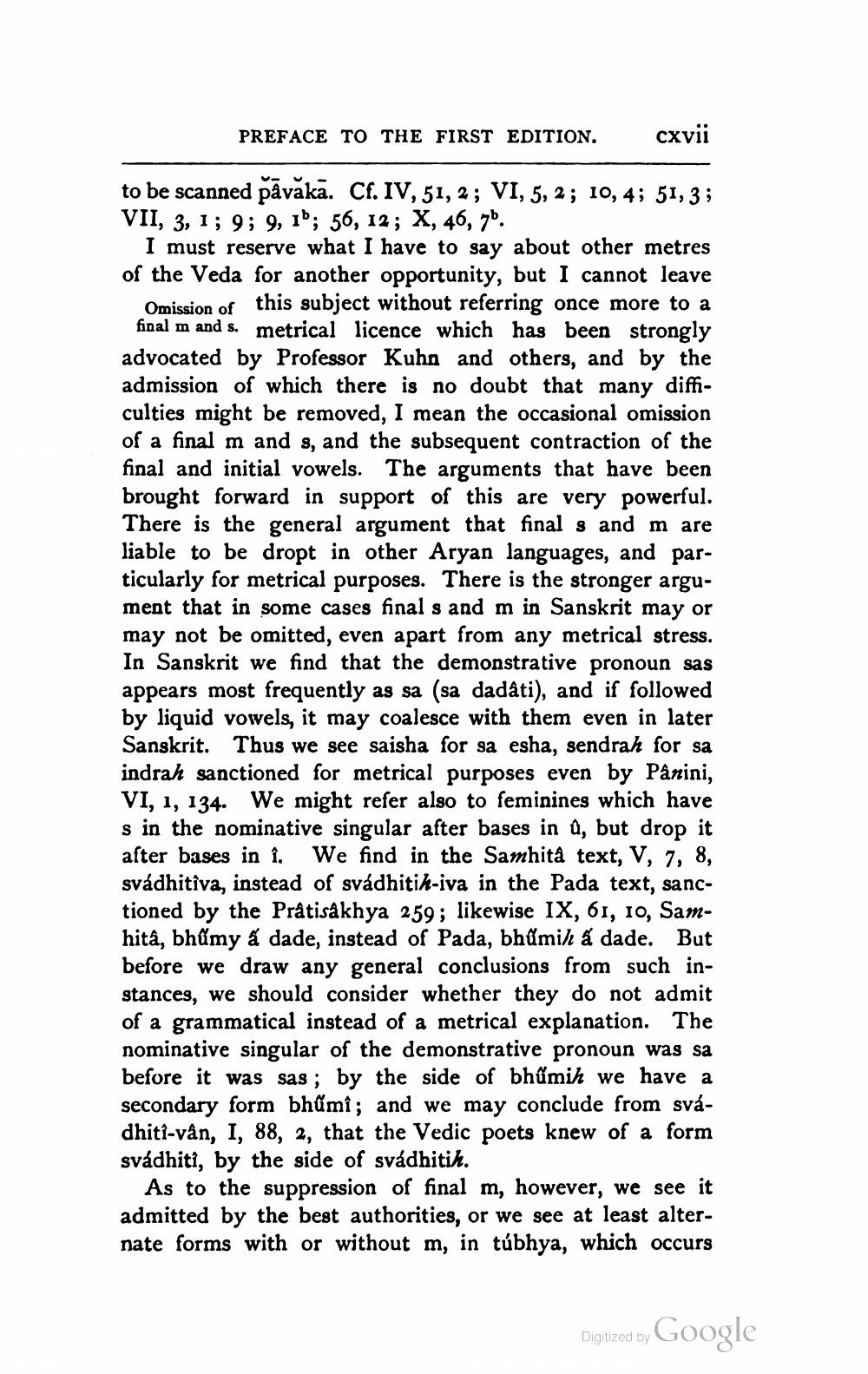________________
PREFACE TO THE FIRST EDITION.
cxvii
to be scanned pāväkā. Cf. IV, 51, 2; VI, 5, 2 ; 10, 4; 51, 3; VII, 3, 1; 9; 9, 10; 56, 12; X, 46, 7b.
I must reserve what I have to say about other metres of the Veda for another opportunity, but I cannot leave
Omission of this subject without referring once more to a final m and s. metrical licence which has been strongly advocated by Professor Kuhn and others, and by the admission of which there is no doubt that many difficulties might be removed, I mean the occasional omission of a final m and s, and the subsequent contraction of the final and initial vowels. The arguments that have been brought forward in support of this are very powerful. There is the general argument that final s and m are liable to be dropt in other Aryan languages, and particularly for metrical purposes. There is the stronger argument that in some cases final s and m in Sanskrit may or may not be omitted, even apart from any metrical stress. In Sanskrit we find that the demonstrative pronoun sas appears most frequently as sa (sa dadâti), and if followed by liquid vowels, it may coalesce with them even in later Sanskrit. Thus we see saisha for sa esha, sendrah for sa indrah sanctioned for metrical purposes even by Panini, VI, 1, 134. We might refer also to feminines which have s in the nominative singular after bases in d, but drop it after bases in î. We find in the Samhità text, V, 7, 8, svádhitiva, instead of svadhitih-iva in the Pada text, sanctioned by the Prátisåkhya 259; likewise IX, 61, 10, Samhita, bhẩmy á dade, instead of Pada, bhůmil á dade. But before we draw any general conclusions from such instances, we should consider whether they do not admit of a grammatical instead of a metrical explanation. The nominative singular of the demonstrative pronoun was sa before it was sas; by the side of bhẩmih we have a secondary form bhấmî; and we may conclude from svádhiti-vân, I, 88, 2, that the Vedic poets knew of a form svádhiti, by the side of svádhitih.
As to the suppression of final m, however, we see it admitted by the best authorities, or we see at least alternate forms with or without m, in túbhya, which occurs
Digitized by Google




